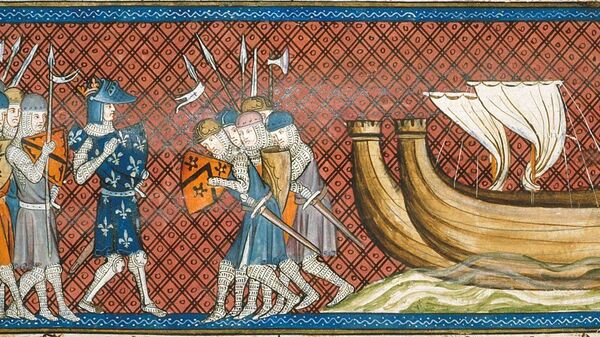Syrian archeologists working in the western governorate of Tartus made a series of important finds in excavation work carried out over the past year, including a long-lost Knights’ Hall at the Safita Tower Crusader fortress thought to have been built during the 13th century AD, Marwan Hassan, the head of the Department of Antiquities in Tartus, has revealed.
Speaking to the Syrian Arab News Agency, Hassan explained that excavation works revealed a ‘diagonal wall’ which served as part of the outer wall structure, with further exploratory work necessary to map out the size of the knights' chamber in greater detail.
In Safita Tower #Tartous Archeology Department managed to locate the Knights’ Hall that the Crusaders built in the middle of the 13th century AD. pic.twitter.com/TjWyPojB3W
— Syrian Eye (@eye_syrian) 20 января 2020 г.
Meanwhile, at the Amrit site, archeologists found ancient pottery shards, an individual gravesite carved out of fossilized sand, human remains, a clay lamp and pipe and other ancient objects.
Work at the al-Marqab Castle, taking place as part of a joint Syrian-Hungarian project, revealed drawings, pottery shards, and other artifacts. A joint Syrian-Russian project was also formed to explore the Tartus coast and Arwad Island, situated about 3 km off the coast. It began its work last year and using advanced surveying equipment, with work expected to continue this year after studies of the accumulated data are completed.
New archaeological discoveries found in Amrit and Safita in Tartous https://t.co/QF9FOrh064 via @SanaAjel
— Louise de Lannoy φ (@LoudL) 20 января 2020 г.
Syria, home to some of the planet's oldest continuously inhabited settlements, and a country through which some of the world’s ancient empires stretched, has made a concerted effort to save its architectural and cultural treasures during the past decade amid the foreign-backed civil conflict.
These efforts have included effects to save and rebuild the country’s multitude of religious sites, including Islamic mosques, Christian churches and shrines, and painstaking work to restore sites such as the Aleppo Citadel UNESCO World Heritage Site, which was damaged in brutal street fighting with terrorists for control of the old city between 2012 and 2016.
After Daesh (ISIS)* terrorists looted historic sites across much of the country’s east between 2014 and 2017, the Syrian government devoted considerable resources in the search for looted artifacts, and has worked with international authorities to try to recover treasures illegally smuggled abroad by criminal gangs during the terrorist occupation.
During the war, archeologists, historians and anthropologists worldwide were horrified by images of terrorists attempting to destroy Palmyra, the former ancient capital of the Palmyrene Empire and one of the most prosperous cities of the Roman Empire. Following the city’s liberation, Syrian, Russian and other foreign civilian specialists as well as Russian military sappers all played an important role in works to restore the ancient city to its former glory.
* A terrorist group outlawed in Russia and many other countries.


